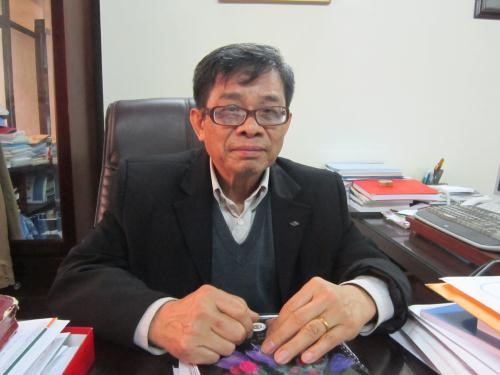 Opinion
Opinion

Dr. Đỗ Đức Định, from the Hà Nội Institute for Socio Economic Studies, speaks to the newspaper Khoa học & Đời sống (Science & Life) on the need to cut the current number of civil servants in half to free up funds to better pay for good quality employees.
 |
| Đỗ Đức Định. — Photo khoahocdoisong.vn |
Dr. Đỗ Đức Định, from the Hà Nội Institute for Socio Economic Studies, speaks to the Khoa học & Đời sống (Science & Life) newspaper on the need to cut the current number of civil servants in half to free up funds to better pay for good quality employees.
How do you respond to the recent Resolution adopted by the Party Central Committee on the road map of salary reform for Vietnamese civil servants from 2021 onwards?
In my opinion, salary reform is a normal part of a market economy. Our current salary system is based on the old system in "the period of subsidisation". That’s why, until now there has been no breakthrough decision in response to social changes. However, salary reform does not only mean that salary earners will have their monthly salary increased mechanically, but it must ensure that their work efficiency and performance will be improved. What’s more important is that the number of working people in an office/workplace will be reduced while their efficiency and productivity will increase.
Will you please elaborate on the idea of cutting the number of people on a company’s payroll while increasing salaries?
Of course, a company or an enterprise can’t afford pay rises for their employees if their productivity remains low or even at a loss while the executives’ salary remains high.
A principle in a market economy is that the payment an employee receives must reflect his/her work performance. Or no work, no pay. In other words, people can live a decent life with their salaries.
Are there a correlation between salary increase and workforce streamlining?
They are closely linked, just like the two faces of a coin. I should say that our country – Việt Nam is one of a few countries with a huge number of public employees. This has become a big burden for the State budget and a challenge for the Government whenever it wants to raise salaries for its employees. Just imagine, we have only one cake but we have to share it with many people. No doubt, each one will have only a very small portion.
Don’t you think that it is a challenging task for Việt Nam to slash the number of people who take their monthly salary from the State budget?
In my opinion, if we have adopted a good and workable roadmap, I’m confident we can do it. We can’t deny the fact that the number of people receiving a salary from the State coffers is high while their working efficiency and effectiveness is not as expected.
We have talked quite a lot about the need to reform our current salary system. To do that, we must have a good set of evaluation tools. It is indisputable that when we have fewer employees, but their work performance is very good, no doubt their salaries will be high and we will then go smoothly towards the goal of efficiency and effectiveness.
Don’t you think that offering a high salary is an effective tool to attract talented people in public sectors?
In my opinion, salary is only a part of the story. What we need now is to have a good policy to keep talents and to make the best use of them. We all agree on the need to increase salaries for all working people. But what we need is to find the most suitable way to encourage them to achieve high working performance.
Will you please talk a bit more about the market economy in our current course of salary reform?
We need to narrow the salary gap between the free market and the administrative sector. As we know there is a relative relationship between the public sector and the private sector. So, one of the objectives in the current proposal to reform our salary policy is to adjust the minimum wage increase in each region so that by 2020 all wage earners can live on their wage. By doing that, we will be able gradually eliminate the intervention by the State on employers’ wage decisions. Of course, the payment is a mutual agreement between the employer and their employees and is based on the workers’ productivity.
In your opinion, in the course of streamlining public employees and civil servants, what is a good number of staff to be streamlined?
In my opinion, the best number is two thirds. If that can’t be done, it will have to be by half.
I’m confident that if we streamline our current civil servants by half, work efficiency in all offices will not be affected. If we don’t do that, our road map for salary increase will not become a reality. — VNS




